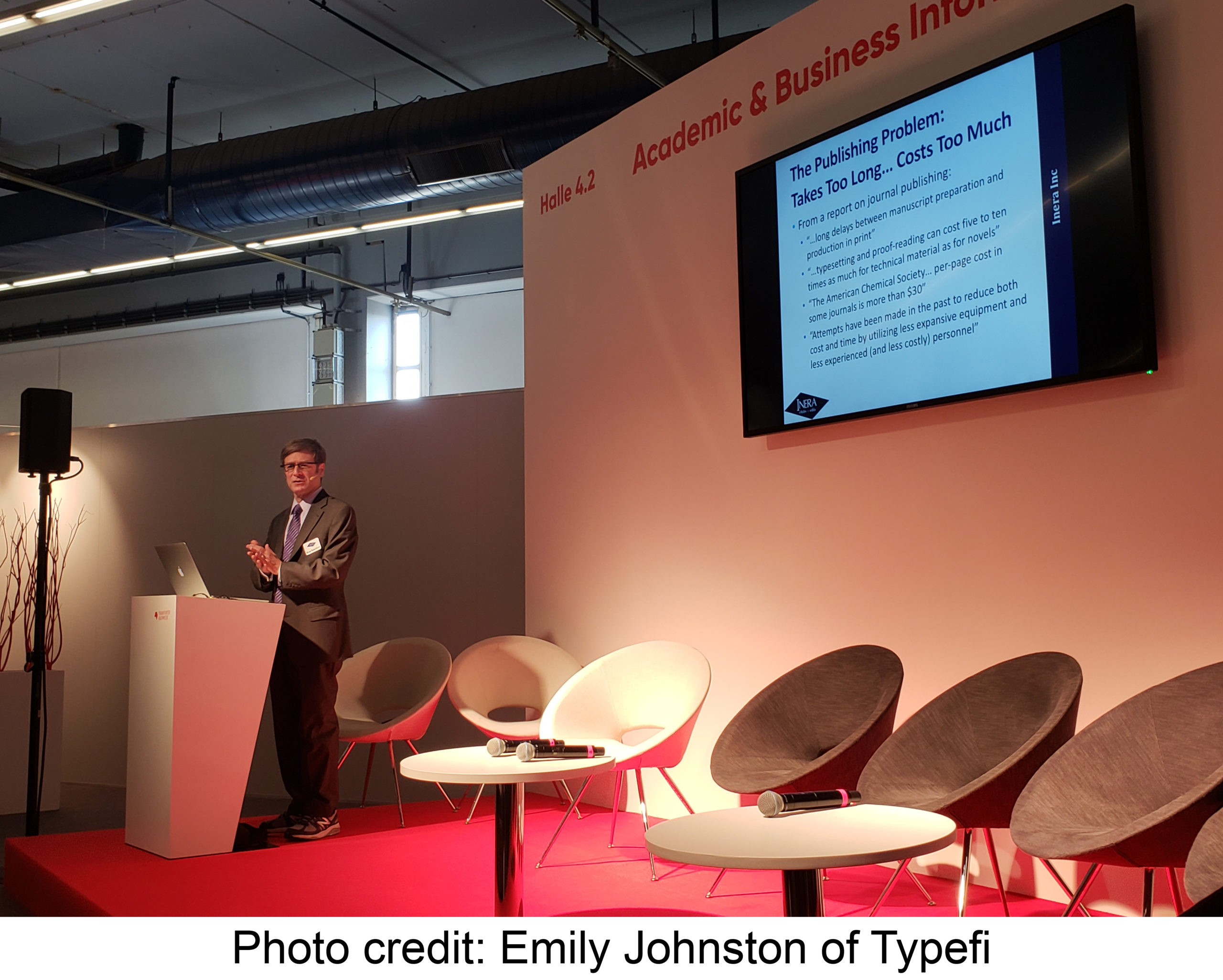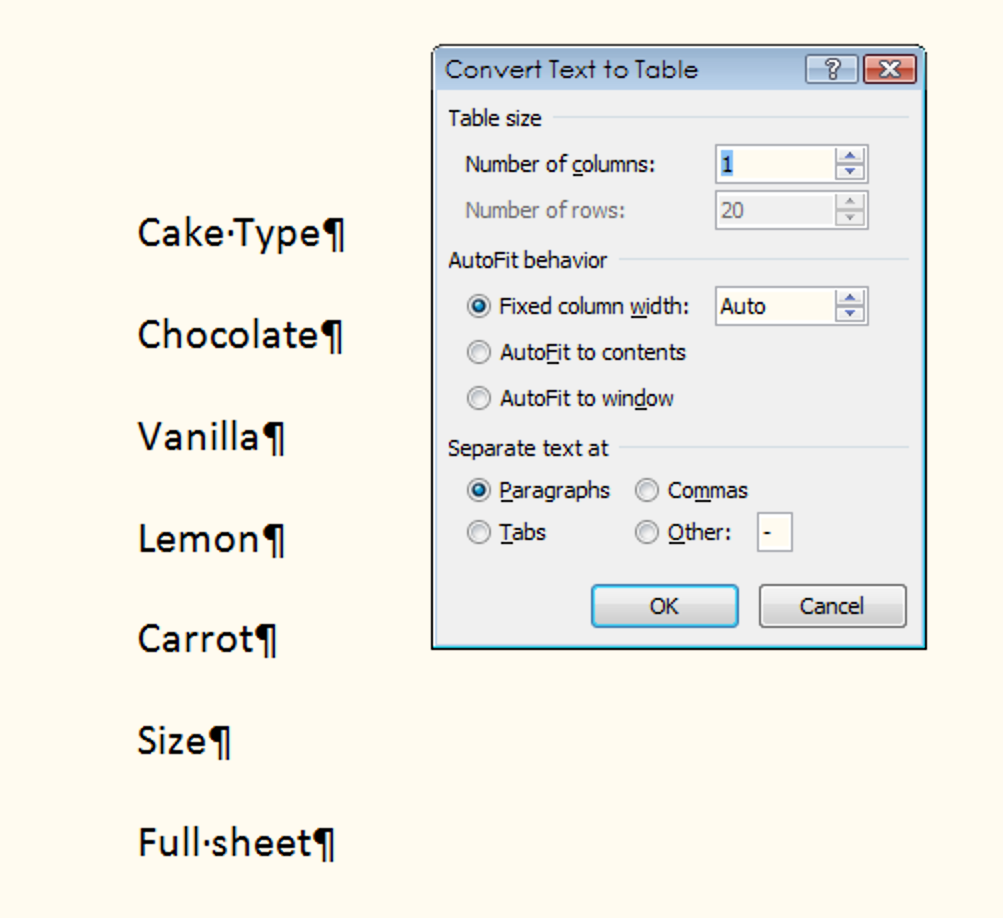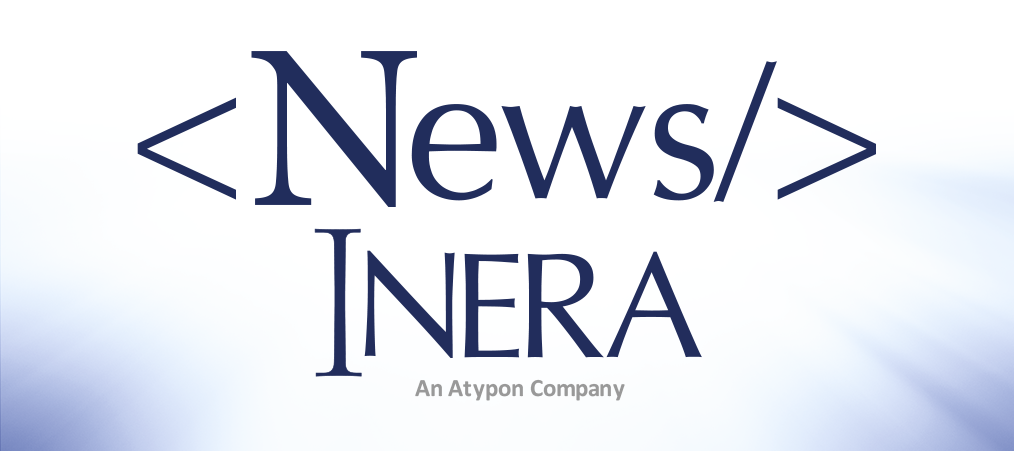What’s new at Inera and around the industry
October 2018 Newsletter
Step into the Fall season with #ALPSP18, new blog posts, #XUG2018, and more in the October 2018 Newsletter!
Countdown to #XUG2018
 Just 17 days left to #XUG2018! If you haven’t yet registered, it’s not too late—you don’t want to miss this year’s agenda.
Just 17 days left to #XUG2018! If you haven’t yet registered, it’s not too late—you don’t want to miss this year’s agenda.
Registration closes on October 31, so don’t miss your chance!
Please take our 1-question survey to weigh in on table topics for the XUG Pain Point Forum discussions!
Key takeaways from #ALPSP18
Our Senior Solutions Consultant, Robin Dunford (@robindunford), attended this year’s ALPSP meeting in Old Windsor, UK. What were his main takeaways from the conference?
- While the technology of scholarly publishing progresses by leaps and bounds, the industry’s underlying culture is still struggling with issues around access and how to balance the need to make an income against both internal and external pressures to move away from subscriptions.
- Scholarly and society publishers were urged to (re)connect with their memberships and wider constituencies to understand what they want from their publishers, rather than imposing solutions that “look cool” but may not address a real need.
- The scholarly publishing industry is not immune either to issues around workplace diversity and equality or to recent drives to highlight and address these issues.
Highlights from Inera’s trip to Frankfurt
 Bruce Rosenblum’s well-attended Wednesday talk on single-source publishing got our Frankfurt Book Fair experience off to a great start; see this blog post from MarkLogic for write-ups of this and other talks from Hall 4.2’s Academic & Business Information Stage. It was wonderful to catch up with so many eXtyles and Edifix users during the week, both those who sat down with us for meetings and those who simply dropped by to chat!
Bruce Rosenblum’s well-attended Wednesday talk on single-source publishing got our Frankfurt Book Fair experience off to a great start; see this blog post from MarkLogic for write-ups of this and other talks from Hall 4.2’s Academic & Business Information Stage. It was wonderful to catch up with so many eXtyles and Edifix users during the week, both those who sat down with us for meetings and those who simply dropped by to chat!
Another highlight of the week was the Standards Technology Forum, co-hosted by ASTM, API, and DNI/Beuth on October 9 for representatives from national standards bodies and standards development organizations around the world. Presentations included insights from corporate users of standards into how they use standards and what they would like to see in future standards.
A recurring theme of the forum was “standards as data”—in contrast to the more traditional “standards as prose” model of standards authored by people for print distribution and human readers. Several prototype projects to extract “data” from “prose” in existing standards were described. Requirements as data have enormous value for standards users, but significant challenges exist in the current authoring/publication workflow to introduce this new model. The standard of the future may look somewhat different from today’s prose; “smart standards” will be designed for both human and machine readers.
Additional sessions covered blockchain for sales and distribution of published documents, new approaches to search and discovery, and growing technical collaboration and sharing of best practices by standards publishers. The day ended with suggestions of more than a dozen topics to explore at the third annual Standards Technology Forum, which will be held in 2019 in the United States.
In the <News/>
Our latest blog post, What to Expect When You’re Exporting, will help you troubleshoot some of the most common issues users encounter when exporting XML from Word using eXtyles.
Our series on moving from a formatting mindset to a content structuring mindset concludes with Part 3! (Here’s how to catch up on Part 1 and Part 2.)
Find Inera at upcoming conferences
 ► Crossref LIVE18
► Crossref LIVE18
Toronto, ON, 13 & 14 November
Inera Marketing Manager Sylvia Izzo Hunter (@sylwritesthings) will be attending Crossref LIVE in Toronto.
Attending this event? We’d love to see you! Please contact us if you’d like to schedule a meeting.
Working with Word
Epic Word Fail: The plural of “column” is not “table”
► The Fail:
Tables have columns. Word has a Columns function. So it was likely inevitable that one day we would see something like this month’s Word Fail: a “table” made by manipulating columns of text in Word:

You can probably imagine what kind of havoc this might wreak on an otherwise innocent Word file!
► The Fix:
You know what’s coming: the best way to solve this problem is not to create it in the first place.
If, however, you find yourself confronted with a table made from columns, here’s what you do:
-
- Before making any changes, make sure you know where the column headers are! If they aren’t already visibly different from the table body, fix that now.
???? To select all headings and apply formatting or a paragraph style, select the first one, then hold down Ctrl while selecting each subsequent one!
- Unselect the column headers.
- Use Page Layout>Columns to change the number of columns to 1.
- Replace column breaks with paragraph breaks: Use Ctrl-h to open the Replace dialog. In the Find box, type ^n, and in the Replace with box, type ^p. (⚠️It’s safest to replace one column break at a time!)
- Select the table text. Use Home>Insert>Table>Convert text to table, choosing Separate text at Paragraphs:

- You should now have a 1-column table! Click anywhere inside it and use Layout>Insert Right to add as many more columns as you need.
- Within what’s now column 1 of your table, the column headers you formatted in the first step should divide the rows into sections. Leave the first of these sections—the real column 1—where it is. Select the second section and cut and paste into the appropriate rows of column 2. (⚠️You’re cutting and pasting just the content of the table cells, not the cells themselves.)
- Repeat until you get to the bottom of column 1 and have filled up all the columns in your table.
- Select the empty rows at the bottom of the table and delete them using Layout>Delete>Delete Rows.

Have an intractable Word problem you’d love to solve? Have a clever tip to share? Send it to us at [email protected] (subject line: Word Tips)!
